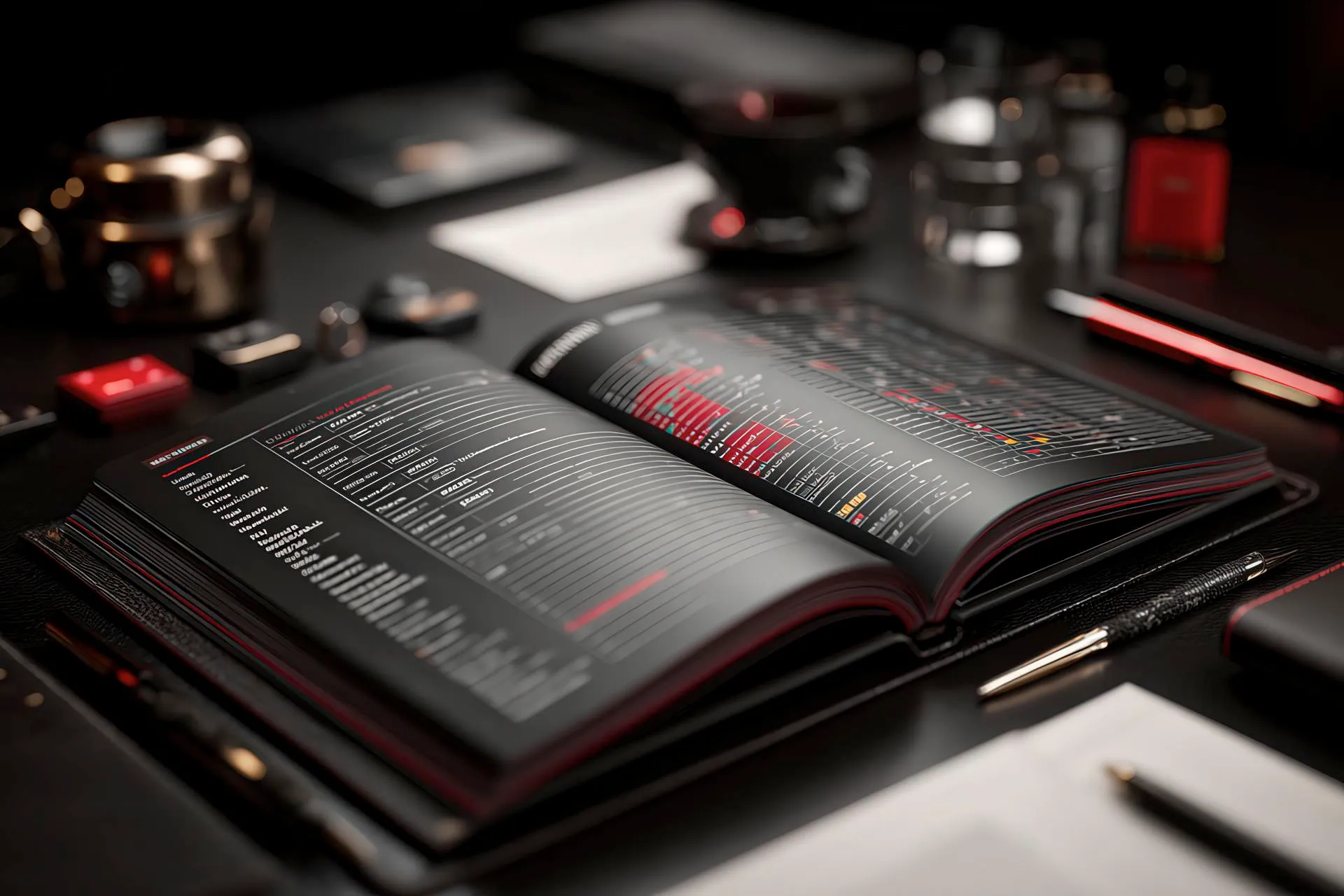Brand manual and tone of voice
Operational clarity. Cultural coherence. Strategic governance.
A brand manual is more than a design compendium — it’s a strategic instrument of alignment. At Innovando, we treat manuals not as decorative outputs, but as governance tools that ensure brand integrity across every context. From logo application to tone of voice, disclaimers to language strategy, we create living frameworks that guide how a brand speaks, appears, and behaves — not only today, but across teams, markets, and generations.
These are not PDFs to forget in a folder.
They are rulebooks for reputation — structured, usable, and built to last.
From branding to brand governance
Designing an identity is one thing. Governing it is another. As brands grow, scale, and expand internationally, the risk of inconsistency increases — visually, linguistically, and ethically. Manuals mitigate this risk by codifying how the brand should behave across every situation, stakeholder, and communication touchpoint.
Our approach begins by translating brand strategy into operational guidelines:
- Identity core: values, mission, voice and tone
- Visual application: logo systems, colours, typography, grid rules
- Verbal usage: tone of voice, writing style, editorial do’s and don’ts
- Legal and ethical positioning: disclaimers, accessibility, compliance
Every element serves one purpose: consistency, without rigidity.
Voice is not style. It’s structure.
Too many brands confuse tone with personality quirks or slogans.
At Innovando, we design tone of voice systems that are structured, scalable, and rooted in linguistic coherence. We analyse how your organisation speaks today, how it is perceived, and how it should sound to meet strategic goals. Then we codify this voice across formats, audiences, and cultural registers.
Our tone of voice guidelines include:
- Language architecture: tone, formality, rhythm, narrative cadence
- Editorial consistency: vocabulary banks, phraseology, voice modulation
- Cross-platform rules: adapting voice for web, documents, social media, internal comms
- Multilingual strategy: from literal translation to narrative equivalence
The result is a voice that does not improvise — it performs, teaches, and endures.
Visual clarity through behavioural rules
Brand visuals must be recognisable, even when you’re not looking.
But recognisability comes not from aesthetic beauty — it comes from systemic clarity. Our manuals go beyond logo placement to define visual behaviour — how design elements should behave in motion, in layouts, in ambiguity.
This includes:
- Logo applications: size ratios, exclusion zones, misuse prevention
- Colour systems: primary/secondary palettes, usage by medium or region
- Typography hierarchies: font pairings, spacing, accessibility principles
- Layout grids: responsiveness, content priority, spatial rhythm
- Digital adaptations: motion rules, UI integration, asset variations
This is visual grammar — readable, repeatable, and robust across use cases.
Legal, cultural and compliance integration
A modern manual must address more than design. It must include ethical, legal, and cultural provisions.
From data privacy statements to language sensitivity, we integrate elements that reflect your brand’s values — not just its visuals.
We ensure that:
- GDPR, cookie, and accessibility disclaimers are consistent and harmonised
- Language use avoids bias, stereotype, or cultural insensitivity
- Brand values are reflected in editorial content and visual presence
- Cross-border guidelines adapt to regulatory and cultural differences
Compliance is no longer separate from communication. It’s part of the brand.
Cross-team usability: real documents for real people
A good manual is not made for designers only.
We write ours so that marketing managers, interns, copywriters, lawyers and even translation agencies can use them intuitively.
That means:
- Logical structure and cross-referenced index
- Editable templates and exportable formats (PDF, Figma, Google Slides, DOCX)
- Practical examples for each rule: from email signatures to LinkedIn posts
- Clear change-tracking and version control
- Orientation for onboarding, franchising, and partner alignment
Our goal is to turn your brand into an operational language — clear, structured, and inclusive.
Multilingual and international-ready systems
Your brand may need to speak more than one language.
That’s why our manuals are multilingual-ready from the start. We design tone of voice and brand architecture with cultural adaptability built in, testing for:
- Tone migration across languages and cultural registers
- Compatibility with legal frameworks in multiple countries
- Translation workflows and content localisation systems
- Stylistic coherence between original and translated content
Whether your team works in German, French, English, or 12 other languages, the manual will remain your brand’s consistent guide.
What you receive
By commissioning a Brand Manual and Tone of Voice system with Innovando, you receive:
- A full manual codifying visual and verbal identity
- Strategic tone of voice system with linguistic structure
- Visual rules including logo, typography, colour and grids
- Usage examples for real-world contexts (from web to policy docs)
- GDPR and ethical language integration
- Editable files for design, legal and editorial teams
- Multilingual compatibility and cultural flexibility
- Governance-ready structure to scale across departments or geographies
- This is more than brand design.
It’s strategic, linguistic and cultural governance — all in one place.
- Your identity is not just how you appear.
- It’s how you’re applied — every day, by everyone.
- Let’s structure it once, so it never fragments again.
Your brand is not just what you say — it’s how you say it, again and again.
A well-crafted manual is more than a guideline; it’s the operational DNA of your brand. If you want your message to travel intact across teams, cultures, and markets, clarity is not optional — it’s strategic.
Let’s build the structure that protects your voice — and projects your value.
Because consistency isn’t just control. It’s trust.
And trust is everything.






